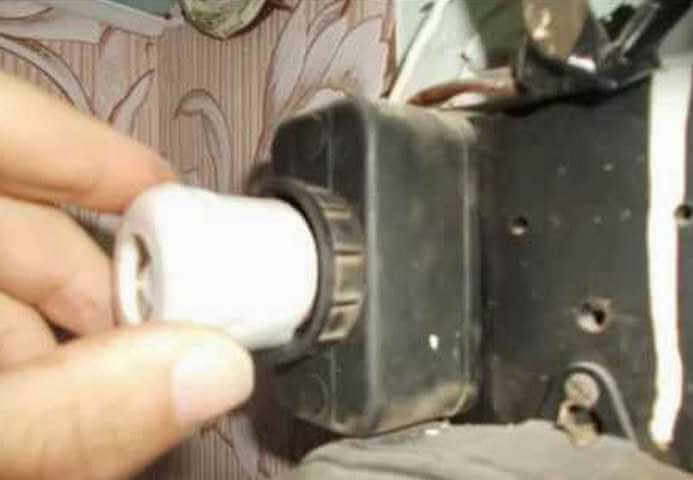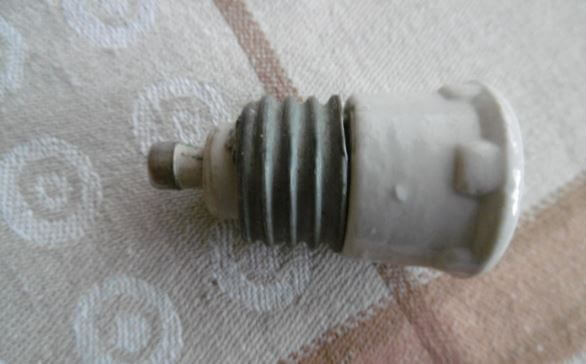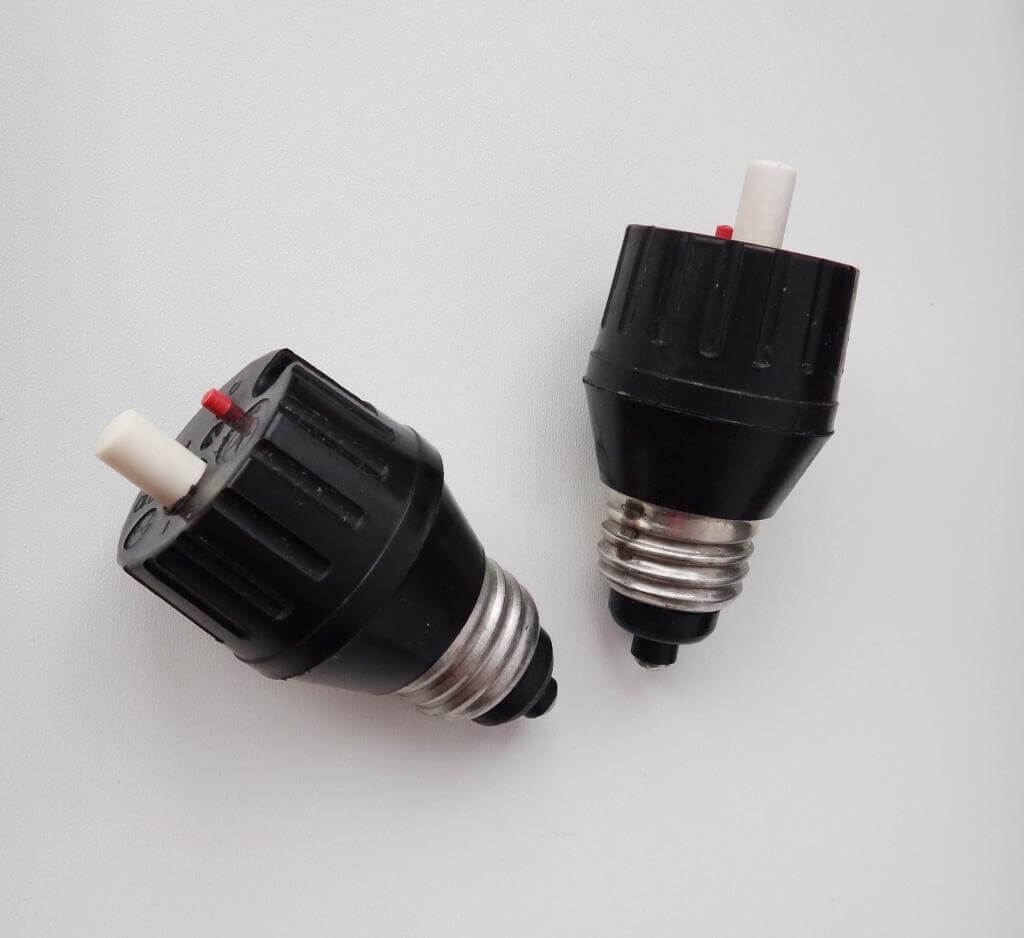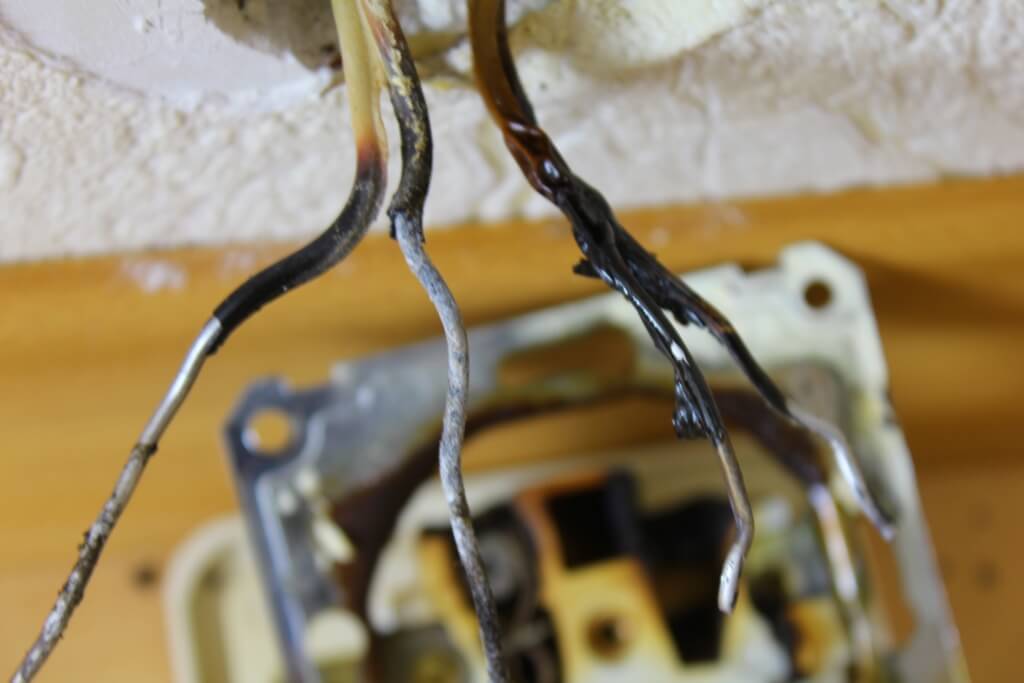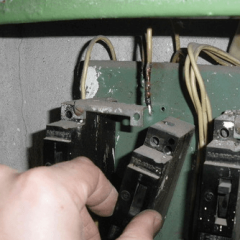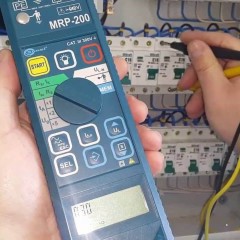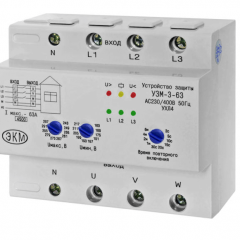Why are traffic jams in the apartment being knocked out and how to eliminate this malfunction?
Design and purpose
An electrical plug is basically the same fuse, but with a screw-on design for connecting conductive parts. Its base is very similar to the usual incandescent bulb, crushed in many more apartments and houses. The main purpose of this electrical device is to protect the circuits from short circuit and excess load above the established. The case is made of a dielectric material (non-conductive) so that it can be screwed in and out even without dielectric gloves, unlike fuses.
There are two types of plugs: with fusible insert and automatic with a button for turning on and off. The option with a fusible insert after tripping requires the replacement of a fuse located inside and as a result of a replacement of the fusible insert. Moreover, its characteristics, namely voltage and current strength, should be the same as those of a burned-out one. If you install, due to a burnout, an inset with a damped rating, then in case of a short circuit in an apartment or, for example, in a private house, not the protective mechanism that disconnects the consumer from the network will work, but the wiring will burn out in some place, and the search for an open circuit is quite problematic.
Automatic plugs having a quick reclosing mechanism do not have a fuse, and therefore are protected from installing a protective element with an inappropriate rating.
Such or similar protective devices should be installed from overloading in all circuits, and preferably with their separation into groups. For example, the light in the country, from one machine or cork, and the outlet for connecting an electric stove, water heater or kettle from another. So it will be easier to establish the reason why traffic jams in the apartment are knocked out.
Possible triggers
Reasons for tripping circuit breakers and plugs if they do not have a series of automatic differential protection installed or RCD (residual current devices), there may be only three:
Short circuit. In this case, a sharp jump in current occurs throughout the circuit and as a result wire heating. At the same time, the voltage drops, but it all happens instantly and if there is no protective mechanism, then a fire occurs or the wiring burns out.This emergency mode is the most dangerous in electricity and it occurs due to deterioration of insulation or incorrect switching of electrical equipment. The faster the protective device trips, the less damage the short circuit will cause. Very often this happens when the light is turned on, if bare wires are closed in the cartridge, and incandescent lamps sometimes can cause a small short circuit inside the bulb itself, which most often is pumped only by the failure of the light source itself.
Overload above face value. You should not choose a protective device (fuse, circuit breaker) with a rating of amperage that greatly exceeds the total load current, since then they will be knocked out only with a short circuit, which is wrong. If, for example, the plugs are installed in an electric circuit, which includes an iron and an electric stove and their total operating current is 10 Amperes, then you need to install a protective device with a nominal value of 12-14 Amperes, since at the moment of switching on the starting current exceeds the working one. It should also be noted that when the washing machine is turned on, the starting current will be greater than when the kettle is turned on. Devices with an electric motor in their design consume a higher inrush current. By and large, overloading is the same as a short circuit. Only in the second case, the current can increase hundreds of times, depending on the power of the source itself.
Malfunction protection element itself. Like any device, electrical protection devices can fail and turn off falsely. There is only one way out of the situation - its replacement with a working one.
Troubleshooting Methods
First you need to determine the reason why traffic jams on the counter are knocked out. In any room, whether it is an apartment, a house or a garage, there is a meter located in the panel (miniature switchgear). If the installed plug is with a fusible insert, then by its appearance you can’t tell whether it was knocked out or not. In order to quickly determine whether the voltage is applied or not, there are indicators on the meter, or rather, on its modern electronic type, that indicate the presence of the input voltage, with the inscription "Network". If it is lit, then the voltage to the consumer has been applied and it is necessary to check the outgoing protection devices.
The knocked-out machine easily cocked, but it can be checked whether the fuse is blown or not, in two ways:
- Installing a new fuse and, accordingly, a fuse in it.
- Using any multimeter in ohmmeter mode or a circuit probe.
If you touch the outputs of one that is in the center and the other is connected to the base, the indicator should light, indicating the presence of a circuit.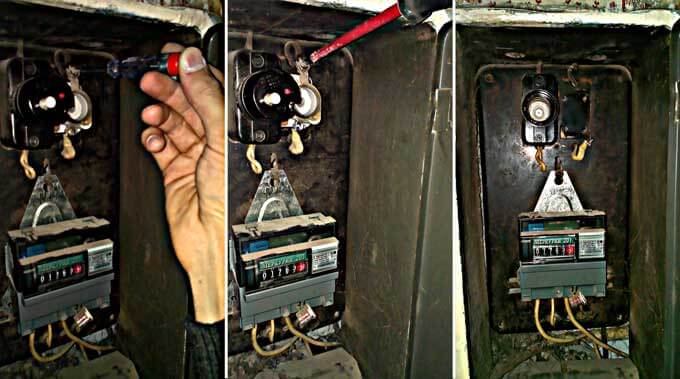
After ascertaining that the protective mechanism of the machine has tripped (knocked out), it is recommended to re-enable it, but do it only once. That is, install a new fusible insert or press a button on the cocking mechanism to its working position. Before you turn on, you must definitely go around the entire room (house, apartment, land) and make a visual inspection. If the situation repeats and the plug does not turn on, then there is a malfunction on the outgoing line, or rather, in the circuit of the consumer himself.
To find out the location of the accident, you need to understand what caused the excess current in the circuit. In order to find out what’s the matter, you need to try to apply voltage without load, that is, disconnecting all electrical appliances from sockets and putting the light switches in the off position. If, after this, the plugs are knocked out without load in a private house or apartment, then the problem is in the wiring. Most often this is a short circuit, it is characterized by sparks, smoke and the smell of melting insulation. About, what to do if the apartment smells of wiring, we told in a separate article.
If, when you turn off all household appliances from the sockets, the plug does not knock out.This means that the cause is a short circuit or improper operation of the device. Immediately you need to pay attention to the outlet into which the connection occurred, if there are any obvious signs of a short circuit, and only then turn on all the electrical appliances in turn. When you turn on the stove in the outlet, you must make sure that their parameters are consistent, otherwise sooner or later it will lead to heating, poor insulation and a short circuit in the apartment. If everything still worked and the protection is triggered regularly (constantly), then the reason for this may be due to an increase in the total load in the consumer circuit and the incorrect choice of the protection rating.
In the kitchen, in the bathroom, traffic jams can be caused by moisture, since water is a current conductor and, accordingly, can cause a short circuit between two different potentials.
If you couldn’t fix the problem yourself
If there is no access to the electrical panel, which, in principle, is absolutely not permissible in the apartment or in the house, or if there is no voltage after the meter, then one logical question arises - where to call and where to contact? Naturally, only to the company of the electricity supplier, with whom an agreement was signed on its consumption. Opening closed switchboards or meters is prohibited. If the accident occurred at night and it is not possible to eliminate it independently, then in each district there are emergency round-the-clock services and the solution to the problem can be placed on their shoulders.
Now you know why traffic jams in the apartment are knocked out and how to determine the cause of the trip. We hope the information provided was useful and interesting for you.
Surely you do not know:

